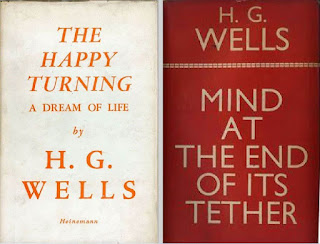Shaker (pronounced shey-ker)
(1) A person or thing that shakes or the means by which
something is shaken.
(2) A container with a perforated top from which a
seasoning, condiment, sugar, flour, or the like is shaken onto food.
(3) Any of various containers for shaking beverages to
mix the ingredients (eg cocktail shaker).
(4) A dredger or caster.
(5) A member of the Millennial Church, originating in
England in the middle of the eighteenth century (initial capital letter).
(6) Noting or pertaining to a style of something produced
by Shakers and characterized by simplicity of form, lack of ornamentation, fine
craftsmanship, and functionality (initial capital letter).
(7) As the later component in mover and shaker, one who
is important, influential or a dynamic forced in some field or generally.
(8) An exposed air-intake system for internal combustion
engines, attached directly to the induction and thus intended to shake as the
engine vibrates.
(9) A variety of pigeon.
(10) In railway line construction, one who holds spikes
while they are hammered.
(11) In music, a musical percussion instrument filled
with granular solids which produce a rhythmic sound when shaken.
(12) A kind of straight-sided, stackable glass.
1400-1450: From the late Middle English, the construct being
shake + -er. Shake is from the Middle English schaken, from the Old English sċeacan
& sċacan (to shake), from the Proto-West
Germanic skakan, from the Proto-Germanic
skakaną (to shake, swing, escape),
from the primitive Indo-European (s)keg- & (s)kek- (to jump, move). It was cognate with the Scots schake & schack (to shake), the West Frisian schaekje (to shake), the Dutch schaken
(to elope, make clean, shake), the Low German schaken (to move, shift, push,
shake) & schacken (to shake, shock), the Norwegian Nynorsk skaka (to shake),
the Swedish skaka (to shake), the Dutch schokken (to shake, shock) and the Russian
скака́ть (skakát) (to jump). The –er suffix is from the Middle English –er & -ere, from the Old
English -ere, from the Proto-Germanic
-ārijaz, thought usually to have been
borrowed from Latin –ārius and
reinforced by the synonymous but unrelated Old French –or & -eor (The
Anglo-Norman variant was -our), from
the Latin -(ā)tor, from the primitive Indo-European -tōr. Added to verbs
(typically a person or thing that does an action indicated by the root verb)
and forms an agent noun. The plural is shakers.
The Shakers
The Millennial Church later called the Shakers, dates from 1747, the name shaker first casually applied circa 1750 although it had been used to describe similar practices in other sects since the 1640s and, as an adjective, shaker was first applied to their stark furniture in 1866. The first cocktail shaker was mentioned in 1868 (the ancient Greeks had seison (a kind of vase) which translated literally as “shaker". The modern-sounding “movers and shakers” is attested as early as 1874. The Shakers began as a sect of the English Quakers, the movement founded in 1747 by Jane and James Wardley. Correctly styled as the United Society of Believers in Christ’s Second Appearing, the Shakers were a celibate, millenarian group that established a number of communal settlements in the United States during the eighteenth century. The early movement was based on the revelations of Ann Lee (1736–1784; addressed within as Mother Ann Lee) who had been active in the English church for almost twenty years after becoming a devotee of the preaching of the Wardleys to whom she confessed her sins; central to her vision was the necessity of repentance and the forsaking of sin as the pathway to redemption.
Movers and shakers: Shakers shaking in worship, New York, 1858.
Promising a vision of a heavenly kingdom to come, Shaker
teaching emphasized simplicity, celibacy, & work and communities were flourishing
by the mid-nineteenth century, contributing to American culture the style of
architecture, furniture, and handicraft for which the movement is today best
remembered. The distinctive feature of
their form of worship was the ecstatic dancing or "shaking", which led
to them being dubbed “the Shaking Quakers”, later generally shorted to “Shakers”.
The physicality of their practices was
neither novel or unique, nor anything particularly associated with Christianity,
many religions or sects within, noted for rituals involving shaking, shouting,
dancing, whirling, and singing, sometimes in intelligible words, often called “in
tongues” (the idea often being what was spoken coming directly from God).
The much-admired Shaker furniture.
Austere though they may
have appeared, the Shakers were genuinely innovative in agriculture and
industry, their farms prosperous and their ingenuity produced a large number of
(usually unpatented) inventions including, the screw propeller, babbitt metal,
a rotary harrow, an automatic spring, a turbine waterwheel, a threshing machine
and the circular saw. In agri-business, they
were the first in the world to package and market seeds and were once the US’s largest
producers of medicinal herbs. Shaker
dance and music is now regarded as a fork in American folk art as well as its
religious tradition and the simplicity, functionality and fine craftsmanship of
their architecture, furniture and artefacts have had a lasting influence on design.
Although intellectually primitive, Mother Ann’s theology
was elaborate but with celibacy as the cardinal principle, the continuity of
the communities depended on a constant flow of converts rather than the organic
regeneration planned by other sects but the numbers attracted were never
sufficient to maintain a critical mass and in the late nineteenth and early
twentieth centuries the movement went into decline. From its height in the 1840s, when some
six-thousand members were active, by 1905 there were barely a thousand, compelling
the shakers to resort to advertising for members, emphasizing physical comfort of
the lifestyle as well as spiritual values.
It became and increasing hard sell in an era of increasing urbanisation
and materialism and the convulsion of the twentieth century did little to
arrest the trend. In 1957, the leaders met
and voted to close the Shaker Covenant, the document which all new members need
to sign to become members. Membership was
thus closed forever and by the turn of the century, there was but one working
Shaker village in Sabbathday Lake, Maine; it had fewer than ten members and, in
2023, there appear to be only one or two left alive.
The shaker and the induction system
1969 Ford Mustang 428 CobraJet.
Shakers were air intakes bolted
directly to the induction path of an internal combustion engine’s
carburetor(s), the advantage being a measurable increase in power using cool,
dense air rather than the inherently warmer under-bonnet air. Cold-air induction systems weren’t uncommon
in the 1960s and 1970s but the shaker’s novelty was that being attached to the
engine and protruding through a carefully shaped lacuna in the hood (bonnet), the things shook as
the engine vibrated on its mounts. Men still are excited by such things.
1971 Plymouth Hemi Cuda.
Early advertising material from Chrysler referred to the device as the Incredible Quivering Exposed Cold Air Grabber but buyers called must have thought that a bit much (IQECAG one of history's less mnemonic initializms) and they’ve only ever been referred to as shakers. The IQECAG was undeniably a sexy scoop and much admired by the males aged 17-39 to whom it was designed to appeal. Sometimes less is more. Adolf Hitler (1889-1945; Führer (leader) and German head of government 1933-1945 & head of state 1934-1945) suggested a good title for his book might be Viereinhalb Jahre [des Kampfes] gegen Lüge, Dummheit und Feigheit (Four and a Half Years of Struggle against Lies, Stupidity and Cowardice) but his publisher thought that a bit ponderous and preferred the more succinct Mein Kampf: Eine Abrechnung and even that was clipped to Mein Kampf for publication. Unfortunately, the revised title was the best thing about it, the style and contents truly ghastly and it's long and repetitious, the ideas within able easily to be reduced to a few dozen pages (some suggest fewer but the historical examples cited for context do require some space).
1974 Pontiac Firebird Trans Am SD-455.
The reverse facing shakers (and air intakes generally) were designed, like cowl-induction, to take advantage of the properties of fluid dynamics which, at speed, produced an accumulation of cold, high-pressure air in the space at the bottom of the windscreen. Their use created an urban myth that Holly certain makes of carburetor (the Holly and the Rochester among those mentioned) didn't like being "force-fed" which (if done badly) was sort of true but nothing to do with the low-pressure bonnet-mounted devices. Engineers had long understood the principle and cowl-induction systems were first seen on racing cars in 1910.
1970 Chevrolet Chevelle SS454 (LS6).
A genuine problem with the external induction systems was rain. In torrential rain, including when the car was parked, moisture entry could cause problems. Some manufacturers included a flap, providing a protective seal. The early ones were manually activated but later versions were vacuum-controlled, the extent of opening cognizant of the pressure being applied to the throttle so it opened and closed and engine speed rose and fell. As a means of getting cold air, this was of course thought most cool.
1964 Ford Fairlane 427 Thunderbolt.
Actually, the bonnet mounted intakes, regardless of which way they faced, weren’t the optimal way to deliver cold air to the induction system but they were the most–admired and something for which buyers were prepared to pay extra so, although they were the most expensive system to produce, they were also the most profitable. Simple ducting from within the wheel-wells delivered most of the benefits but the most efficient harvest of high-pressure air which gained also a “ram-air” effect which, helpfully, increased as speeds rose, was to duct from a forward-facing inlet in the front bumper bar or grill. Enjoying a much higher pressure than the area around the cowl, with well-designed ducting, a ram-air tube can operate at up to 125% the efficiency of a cowl intake, able to generate a pressure of 2-3 psi (14-20 pascals) at high speed. Ford in 1936 & 1964 found that by happy coincidence, the inside set of headlights on their Galaxies and Fairlanes were positioned to suit such ducting almost as if they'd been placed there by design so on the limited production "Lightweight" Galaxie and the Fairlane "Thunderbolt", the lens were removed and the apertures re-purposed. Only 100 of the Thunderbolts were produced, all intended for use in drag racing and this machine secured the 1964 NHRA (National Hot Rod Association) championship in the Super Stock class.





















